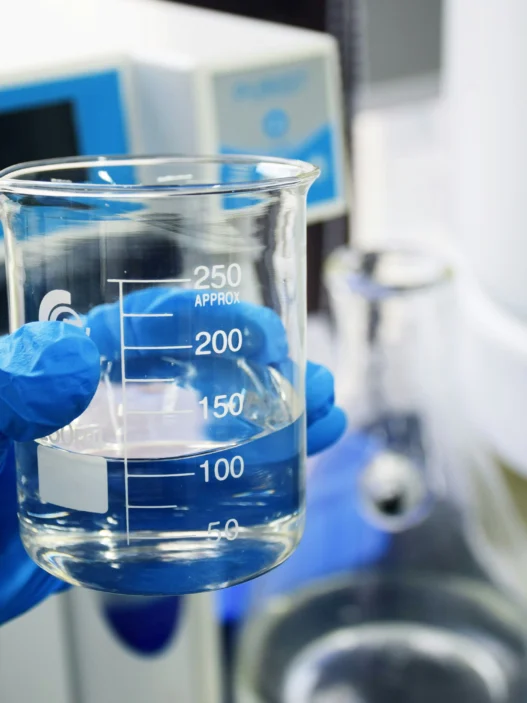Docosanol is a common ingredient found in over-the-counter cold sore treatments. Its relevance to everyday life lies in its ability to help alleviate the discomfort and symptoms associated with cold sores, such as pain, itching, and burning. By preventing the virus from spreading and reducing the healing time of cold sores, Docosanol can help individuals manage this common ailment and resume their daily activities more quickly.
Table of Contents:
- 💡 Commercial Applications
- ⚗️ Chemical & Physical Properties
- 🏭 Production & Procurement
- ⚠️ Safety Considerations
- 🔬 Potential Research Directions
- 🧪 Related Compounds
💡 Commercial Applications
Docosanol, also known as behenyl alcohol, is primarily used in commercial and industrial applications as an ingredient in skincare products. It is commonly included in lip balms, lotions, and creams for its moisturizing and emollient properties. Additionally, Docosanol is used in hair care products for its conditioning and softening effects on the hair.
In the realm of drug and medication applications, Docosanol is widely utilized as an over-the-counter treatment for cold sores. As an antiviral agent, it works by inhibiting the replication of herpes simplex virus, reducing the duration and severity of cold sore outbreaks. Docosanol cream is applied topically to the affected area, providing relief from pain, itching, and discomfort associated with cold sores.
Overall, Docosanol plays a crucial role in both commercial and industrial settings, as well as in the pharmaceutical industry for its therapeutic benefits. Its versatile applications make it a valuable ingredient in various skincare products and an effective treatment option for individuals suffering from cold sores.
⚗️ Chemical & Physical Properties
Docosanol is a white, odorless solid with a waxy texture. It is insoluble in water but is soluble in ethanol and acetone.
The molar mass of Docosanol is around 310.61 g/mol, and its density is approximately 0.850 g/cm^3. This places Docosanol in the same range as common food items such as sugar (342.30 g/mol) and salt (58.44 g/mol) in terms of molar mass, but with a lower density compared to food items like vegetable oil (approximately 0.92 g/cm^3).
The melting point of Docosanol is around 88-89°C, while the boiling point is approximately 105-110°C. These values are higher than those of common food items like butter (melting point around 32-35°C) and water (boiling point at 100°C).
Docosanol is sparingly soluble in water, forming a white suspension. It has a high viscosity, meaning it is thick and sticky. This contrasts with common food items like sugar and salt, which are highly soluble in water and have lower viscosity.
🏭 Production & Procurement
Docosanol, a saturated fatty alcohol, is commonly produced through a multi-step chemical synthesis process. The starting material for the production of Docosanol is typically derived from natural sources such as coconut oil or tallow. Through various chemical reactions, the fatty alcohol is then isolated and purified to yield the final product.
Docosanol can be procured through various suppliers and manufacturers, who typically distribute the compound in the form of a white, waxy solid. It is commonly packaged in drums, bags, or smaller containers depending on the quantity ordered. Transportation of Docosanol is typically done via ground shipping or air freight, adhering to all safety regulations outlined for handling chemical compounds.
⚠️ Safety Considerations
Safety considerations for Docosanol include potential skin irritations or allergic reactions in some individuals. It is important to avoid contact with eyes, mucous membranes, or open wounds when using the product. Additionally, it is recommended to wash hands thoroughly after application to prevent accidental ingestion.
Hazard statements for Docosanol include the potential for causing skin irritation or allergic reactions in sensitive individuals. It is important to use caution when applying the product to avoid any adverse reactions. In case of skin irritation, it is recommended to discontinue use and seek medical advice if necessary.
Precautionary statements for Docosanol include keeping the product out of reach of children to prevent accidental ingestion. It is important to store the product in a cool, dry place away from direct sunlight to maintain its effectiveness. Additionally, it is recommended to follow the directions for use provided on the packaging to ensure safe and effective application.
🔬 Potential Research Directions
One potential research direction for Docosanol is investigating its effectiveness in preventing viral replication in other viruses besides herpes simplex virus. Given its mechanism of action in inhibiting fusion of the virus with host cell membranes, there may be potential for Docosanol to be effective against other enveloped viruses.
Another area of research could focus on optimizing the formulation and delivery mechanism of Docosanol for improved efficacy. This could involve exploring different concentrations, combinations with other antiviral agents, or alternative applications routes to enhance the treatment’s bioavailability and therapeutic effects.
Furthermore, research could also delve into understanding the long-term safety and potential side effects of Docosanol. Studying its impact on host cell membranes and potential interactions with other drugs could provide valuable insights into the overall safety profile of Docosanol as a treatment for herpes labialis.
🧪 Related Compounds
One similar compound to Docosanol based upon molecular structure is Triacontanol, which is a long-chain fatty alcohol comprised of 30 carbon atoms. Triacontanol is used in plant growth regulators and has been studied for its potential benefits in enhancing plant growth and yield. This compound is structurally similar to Docosanol due to its long carbon chain structure, which gives it similar properties and potential applications.
Another compound with a similar molecular structure to Docosanol is Tetracosanol, a long-chain fatty alcohol containing 24 carbon atoms. Tetracosanol has been studied for its potential benefits in improving lipid metabolism and reducing cholesterol levels. This compound shares structural similarities with Docosanol in terms of its long carbon chain, which influences its biological activity and potential pharmaceutical applications.
Hexadecanol is another compound similar to Docosanol based on molecular structure, as both contain long carbon chains that influence their properties. Hexadecanol is a fatty alcohol with 16 carbon atoms and is used in various industries, including cosmetics and pharmaceuticals. The structural similarity between Hexadecanol and Docosanol allows for potential similarities in their biological activities and applications in related fields.




